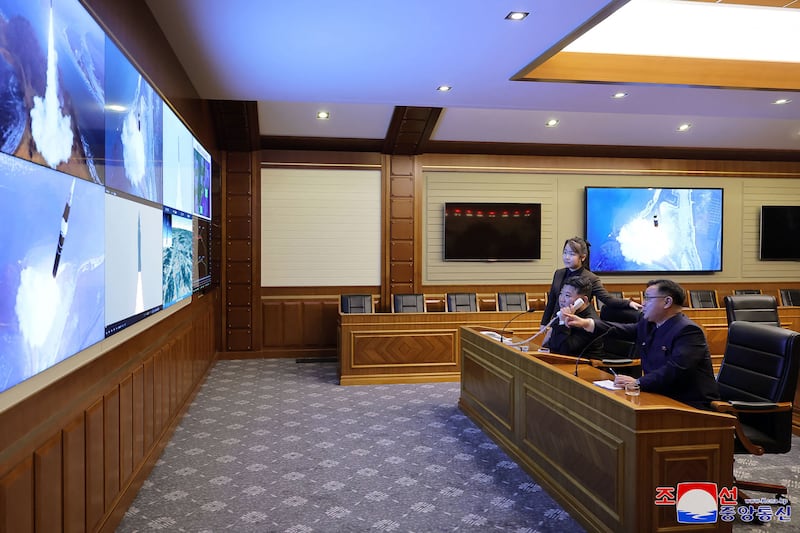TAIPEI, Taiwan – South Korea’s military said North Korea’s claim of successfully launching a new intermediate-range ballistic missile, or IRBM, tipped with a hypersonic warhead is likely to be a “deception.”
The North said on Tuesday that it successfully test-fired the missile the previous day, saying it flew some 1,500 kilometers (930 miles) at 12 times the speed of sound. South Korea’s Joint Chiefs of Staff, or JCS, confirmed the launch on Monday but did not identify the type of missile.
“It is assessed that North Korea’s claim of the flight distance and the second peak altitude is highly likely deception,” said JCS spokesperson Col. Lee Sung-jun during a regular briefing on Tuesday.
“The flight range analyzed by South Korea, the United States and Japan is around 1,100 kilometers and [the missile] did not reach a second peak,” Lee added, dismissing the North’s claim that the missile reached the second peak at 42.5 kilometers.
“Hypersonic missiles will be difficult to demonstrate their performance in the Korean Peninsula, which has a short length of depth,” said Lee. In the military, the term “depth” refers to the extension of operations in space, time, or purpose.

When asked whether North Korea could have received technological assistance from Russia, Lee did not rule that out.
The North said it had accomplished technological advancements, such as using a “new compound of carbon fiber” for the engine body.
Unlike conventional ballistic missiles that fly through the thin atmosphere of outer space, hypersonic missiles need to be made of new materials that can withstand resistance and friction because they have a long flight path within the atmosphere.
South Korea included carbon fibre, which can be used to develop solid fuel missiles, in the list of items subject to sanctions monitoring against North Korea.
However, the North’s announcement indicates that it had acquired such materials, raising suspicion that there might have been Russian assistance.
North Korea and Russia have moved noticeably closer over the past year or more amid widespread suspicion that North Korea has supplied conventional weapons to Russia for its war in Ukraine in return for military and economic assistance.
RELATED STORIES
North Korea’s mid-range ballistic missile systems spotted in Russia: expert
Seoul to counter North Korean threats with new missile system
North Korea sent 100 ballistic missiles to Russia: Ukraine
Over the past five years, nations like Russia and China have accelerated their development of hypersonic missiles to target U.S. forces both domestically and internationally, according to the Center for Strategic and International Studies.
Most modern missile defence systems, including the one in South Korea, are designed to target ballistic missiles, hypersonic missiles are designed to exploit loopholes in such defence systems.
Edited by Mike Firn.
